The Ultimate Guide to Junk Removal for Landlords: How to Keep Your Properties Clean and Ready for New Tenants
As a landlord, managing rental properties comes with its own set of challenges—especially when it comes to cleaning up after tenants move out. Whether it’s leftover furniture, old appliances, or just piles of junk, dealing with tenant debris can be time-consuming and stressful. But here’s the good news: with the right junk removal strategies, you can have your property clean and ready for new tenants in no time. In this guide, we’ll walk you through everything you need to know about junk removal for landlords.
Why Junk Removal is Essential for Landlords
1. Quick Turnaround for New Tenants
When a tenant moves out, you want to prepare the property for new tenants as quickly as possible to avoid losing rental income. Efficient junk removal is key to reducing the downtime between tenants.
2. Maintains Property Value
Leftover junk can quickly turn into an eyesore, potentially lowering the value of your rental property. By keeping your property clean and clutter-free, you maintain its appeal and market value.
3. Reduces Stress and Saves Time
Handling junk removal on your own can be time-consuming, especially if you don’t have the right tools or resources. By outsourcing to a professional service, landlords can focus on other important tasks like finding new tenants.
Step-by-Step Guide to Junk Removal for Landlords
Step 1: Conduct a Thorough Property Walkthrough
Before you start removing junk, it’s important to assess the property and take note of all the items that need to be cleared out.
- Create a checklist: This helps ensure you don’t miss anything, especially hidden items in closets, garages, or attics.
- Take photos: Document the condition of the property for your records and in case of any disputes with former tenants.
Step 2: Sort and Categorize Junk
To streamline the removal process, sort items into different categories.
| Category | Examples |
|---|---|
| Recyclable | Cardboard, plastics, metal |
| Donatable | Gently used furniture, electronics |
| Hazardous Waste | Paint, batteries, old electronics |
| Trash | Broken furniture, general waste |
Step 3: Choose the Right Junk Removal Method
Deciding how to dispose of junk depends on the amount and type of items you’re dealing with.
- DIY Junk Removal: Best for small amounts of junk that can fit into your vehicle.
- Dumpster Rental: Ideal for larger cleanouts, especially after long-term tenants move out.
- Professional Junk Removal Services: If you’re dealing with large, bulky items or want to save time, hire a local service to handle everything for you.
Step 4: Clean and Prepare the Property for New Tenants
After the junk is removed, take the opportunity to deep clean the property. This ensures it’s in top condition and ready to show to potential tenants.
- Key areas to clean:
- Carpets and floors
- Kitchens and bathrooms
- Windows and light fixtures
- Tip: Hire a cleaning service to save time and ensure a thorough job.
Benefits of Hiring Professional Junk Removal Services for Landlords
1. Saves Time and Effort
Professional junk removal companies handle everything from loading to disposal, freeing up your time to focus on other aspects of managing your property.
2. Proper Disposal and Recycling
A reputable junk removal company will prioritize eco-friendly disposal by recycling items and donating usable goods, reducing landfill waste.
3. Avoids Legal Issues
Improper disposal of certain items, especially hazardous waste, can result in fines. Professional services know how to handle these materials safely and legally.
Tips for Landlords to Make Junk Removal Easier
- Include Junk Removal Clauses in Lease Agreements
- Outline tenants’ responsibilities regarding junk removal to avoid disputes.
- Include a clause that allows you to deduct the cost of junk removal from the security deposit if needed.
- Schedule Regular Property Inspections
- Conduct periodic inspections to ensure tenants aren’t accumulating junk.
- This helps identify potential issues early, making cleanouts easier.
- Partner with a Reliable Junk Removal Company
- Build a relationship with a trusted local service to get better rates and faster response times.
- Look for companies that prioritize recycling and donations.
FAQs About Junk Removal for Landlords
Q1: How much does junk removal cost for rental properties?
The cost depends on the volume of junk, type of items, and location. On average, landlords can expect to pay between $200 to $600 per load for a professional service.
Q2: Can landlords charge tenants for junk removal?
Yes, if it’s stated in the lease agreement. Landlords can deduct the cost from the security deposit if tenants leave behind excessive junk.
Q3: What items won’t junk removal companies take?
Most companies won’t handle hazardous materials like paint, chemicals, or asbestos. Be sure to confirm what they will and won’t take before scheduling a pickup.
Q4: Is it better to rent a dumpster or hire a junk removal service?
It depends on the size of the project. For large, ongoing cleanouts, a dumpster rental may be more cost-effective. For quick, one-time cleanouts, a junk removal service is usually faster.
Quick & Reliable
We are available by phone or email
CITIES WE SERVICE
Benton, LA
Minden, LA
SERVICES
All Rights Reserved | LEFTOVERS Junk Hauling & Roll-Off Dumpsters
